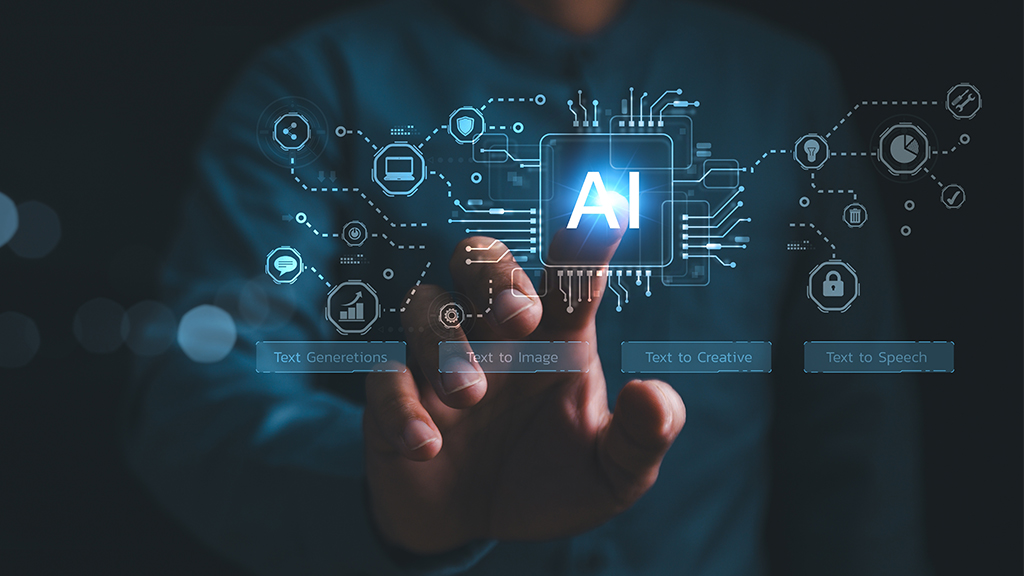
Data & AI Evangelist
Subscribe to the newsletter
Data modernization has become a top priority for businesses aiming to stay competitive and make smarter decisions. Transitioning from legacy databases to modern data platforms is transforming IT architectures worldwide, enabling organizations to harness advanced capabilities. In fact, a recent survey by MIT Technology Review of 350 senior data and technology executives revealed that over half of these leaders have initiated modernization projects within the past two years, with another quarter planning to start soon. Other studies echo this, showing a strong commitment among companies to enhance their data infrastructure.
The rise in AI, particularly generative AI, is closely tied to this surge in data modernization efforts. However, it’s not the only factor; improving decision-making is the primary driver for 46% of executives, while nearly 40% are motivated by the need to support AI models, and 38% prioritize decarbonization goals. Improving compliance and operational efficiency also remain essential incentives.
Despite progress, many organizations face challenges with strategy alignment and goal setting in their modernization journeys. In this blog, we’ll outline a practical data modernization roadmap for getting started with data modernization, addressing common obstacles, and showing how Microsoft’s technology stack can accelerate this process effectively.
Why data modernization matters: Building a data-driven business mindset
Data-first modernization is all about making data the core of your business strategy. It means reimagining how you gather, store, and use data to fuel growth, improve efficiency, and spark innovation. It starts with simple but crucial questions: What data do you actually need? Where are you using it? And how can you get more value from it? It’s about ensuring your data works for you, not vice versa. Most businesses tend to focus on modernizing their infrastructure first, then their applications, and finally, their data. But what’s really needed is a shift in thinking—starting with a solid data strategy right from the beginning, not leaving it as an afterthought. Data should come first, not last, in your modernization journey.
Data-first leaders who prioritize and excel in managing their data effectively are five times more likely to be well-prepared and able to recover quickly from data loss incidents than those who don’t have strong data management practices. The idea is to treat data as a valuable asset. By updating your data systems, whether by moving to the cloud or improving analytics, you can access accurate insights instantly, helping teams make faster, more informed decisions.
Discover more: What is data modernization: Best practices for future-ready data management.
Navigating data modernization challenges: Aligning strategy with success
Many organizations have a data strategy as a foundational part of their data modernization efforts, yet simply having a strategy isn’t enough to unlock its full potential. To achieve maximum impact, align the data strategy fully with the organization’s core business objectives. Without this alignment, the strategy may fail to deliver meaningful value and support key initiatives.
Achieving data modernization goals requires commitment across departments and strategic guidance on implementation decisions. However, several data modernization challenges can impede successful deployment and integration. Here’s a closer look at these hurdles:
Large, fragmented volume of data silos
One of the biggest hurdles in big data modernization is the sheer volume of data silos across an organization. These silos often exist in various forms, with data coming from different departments, systems, or even third-party platforms. The heterogeneity of these data sources—structured and unstructured creates complexities in data integration.
Bringing together fragmented datasets into a unified analytics platform requires significant effort, as businesses need to ensure data consistency and compatibility. If not handled carefully, this slows down the data modernization process and prevents businesses from fully leveraging the insights hidden in their data.
Bulky legacy systems
Legacy systems, while still operational, often pose one of the greatest obstacles to data platform modernization. These outdated systems were not built to handle modern data needs or integrate seamlessly with cloud platforms, leading to inefficiencies and limited scalability. Migrating data from these bulky systems is time-consuming and risky, as legacy databases may not support modern data formats or processing requirements.
Even though these systems are inefficient, there may be reluctance to invest in new infrastructure. So, clinging to legacy systems prevents businesses from fully capitalizing on the flexibility and scalability offered by modern cloud platforms.
Talent gaps
The shortage of skilled professionals capable of driving data modernization initiatives is another significant challenge. Organizations often struggle to find talent with the necessary expertise in modern data technologies, data analytics, and cloud computing. This skills gap can slow down the modernization process, as existing employees may require extensive training to adapt to new systems. Investing in training programs and collaborating with educational institutions can help organizations bridge this gap and build a workforce that is well-equipped to handle data modernization efforts.
A roadmap to success: 5 essential steps for data modernization with Microsoft Fabric
While the journey toward data modernization seems daunting, it is completely manageable with the right strategy. In fact, with the right approach, these challenges can become opportunities –opportunities to streamline operations, acquire new insights, and future-proof your data infrastructure. So, how do you tackle these obstacles and modernize your data? It starts with taking it one step at a time, with a clear, practical plan that helps you make real progress.
Let’s walk you through a data modernization roadmap with Microsoft Fabric.
Step 1: Evaluate your data landscape
The first step in your data modernization initiative is to take a good look at your current data infrastructure. Many organizations find themselves juggling a mix of on-premises systems, outdated databases, and disconnected cloud solutions, all of which need to be understood to plan the next steps. This fragmented approach makes it challenging to get a clear view of your data and often leads to inefficiencies and missed opportunities.
Step 2: Define a unified data strategy and architecture
After assessing the current environment, the next step is to define a unified data strategy. Your data strategy should reflect your business objectives, whether it’s improving operational efficiency, delivering better customer experiences, or enabling advanced analytics.
This involves deciding whether you will use a Data Lake, a Data Warehouse, or a combination of both (i.e., a Lakehouse architecture). OneLake in Microsoft Fabric connects data from all parts of your organization into a unified system. Or you can use data warehouses such as Azure Synapse Analytics for structured, relational data for business reporting and operational analytics.
With Fabric, you can easily integrate data from various departments, such as marketing, sales, finance, and operations, into a single platform, ensuring consistency and accuracy across all analytics.
Best practice: Start by defining your business goals (such as predictive analytics or real-time reporting) and then align these objectives with Fabric’s capabilities. This will ensure your modernization efforts are laser-focused and deliver measurable value.
Step 3: Pre-migration planning
After defining the strategy, it’s time to work on your data migration journey. This step includes prioritizing data sets, mapping out the migration timeline, and choosing appropriate tools like Azure Data Factory to minimize disruption. Pre-migration planning should also account for data dependencies and workload priorities, ensuring that systems with critical interdependencies are migrated in the right order.
Step 4: Migrate your data
With a solid data migration plan in place, begin moving your data to the Fabric environment. Once your data is in Fabric’s Lakehouse or Warehouse, it becomes easier to manage, analyze, and scale. For unstructured or semi-structured data, migrate to OneLake via Azure Data Factory, which supports large-scale data ingestion. For structured and relational data, Azure Synapse Analytics provides an ideal environment for data warehousing and analytics.
Step 5: Cleanse, optimize, and integrate data
After migrating your data, it’s important to ensure it’s clean, optimized, and well-integrated for future use. This step involves data transformation, ensuring high-quality, deduplicated data, and establishing integrations between different data sources for a unified view.
Use Azure Data Factory to automate data transformation and cleansing workflows. For more complex data preparation tasks or handling large-scale data, leverage Azure Databricks to optimize performance and enable advanced transformation pipelines.
Step 6: Enable advanced analytics and AI with Fabric’s unified platform
Once your data is unified and modernized, the next step is to leverage advanced data analytics and AI to derive actionable insights. Modern businesses need real-time data insights to stay competitive, and Microsoft Fabric provides the tools you need to make this happen.
Microsoft Fabric offers powerful analytics capabilities, including data science tools that allow you to build, train, and deploy machine learning models directly within the platform. Microsoft Fabric also includes Power BI, enabling rich, interactive data visualizations that allow business users to create reports and dashboards without relying on IT teams.
Best practice: Start small. Instead of trying to tackle large, complex analytics projects right away, begin with more manageable use cases. Use AI Skills in Microsoft Fabric to generate insight automatically from your data.
Continue reading: Inside Microsoft Fabric: The role of Power BI in generating BI insights.
Step 7: Strengthen governance and security
As your data estate matures, data governance and security are paramount to maintaining data trust, meeting regulatory compliance, and protecting sensitive information. Data breaches, compliance failures, and poor data management can undermine the benefits of data modernization. A robust data governance framework ensures data quality, accessibility, and security across the organization.
Microsoft Fabric’s built-in security features, like OneSecurity, encrypt and protect all data using comprehensive identity and access management tools. Additionally, Microsoft Purview within the Fabric environment provides enterprise-level data governance, allowing you to track data lineage, maintain compliance, and enforce data policies across the organization.
Best practice: Regularly audit your data estate for compliance and security vulnerabilities. Appoint data stewards to maintain governance policies and ensure that the data governance framework evolves as your data estate grows.
Further reading: Data governance best practices: A roadmap to lasting success.
Future-proof your data infrastructure with Confiz modernization roadmap
With data modernization services becoming essential for modern businesses to stay competitive, Confiz is here to support your journey toward a more agile, data-driven future. Our tailored services and 5-week assessment can help you break free from outdated data systems and move toward a unified, efficient data environment. By partnering with Confiz, you gain access to expert insights and a roadmap designed specifically for your business, setting you up to leverage your data like never before. Ready to take the next step in your data modernization journey? Let Confiz guide you toward a future of data-driven success. Contact us now at marketing@confiz.com.



